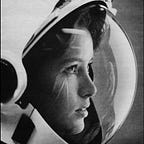Why Are so Many Objects in the Universe Round?
On the shape of soap bubbles and the observable universe itself
In one of the most beautiful renditions of the night sky, Vincent Van Gogh depicts the stars not as mere pinpricks of light on the supple dark backdrop of empty space, but as turbulent and lyrical circles of paint, each warm center enlaced with the husk of loving, unflinching color. However, the stars aren’t the only ones which are spherical in nature — so too is the crescent moon at the upper right corner and the brilliantly illuminated Venus just to the right of the rich and oily cypress tree. Though not visible in this painting, even the Earth in the foreground is, itself, round. It would seem objects in nature gravitate towards this round shape. Even our picture of the observable universe is round. But why?
It has to do with some basic laws of physics. The sphere is a shape which allows for the most amount of volume with the least amount of surface. It is a very efficient way of enclosing objects and also allows for any point on its surface to be equally as far from the center as any other point. This is unlike a cube where the corners are further from its center…
